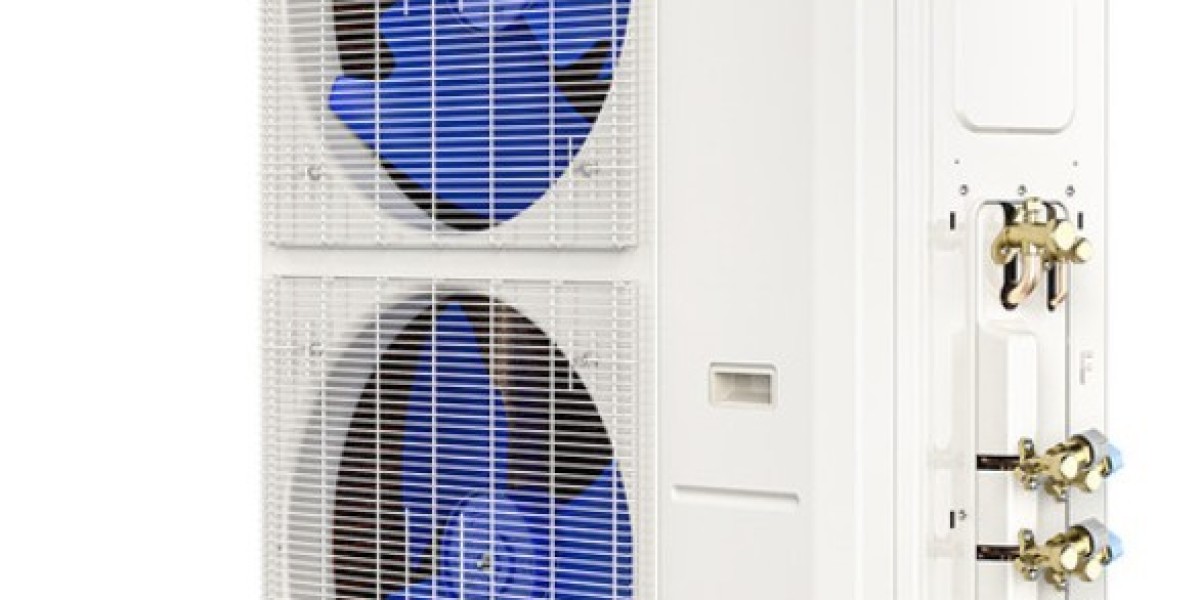Creating the right indoor climate can be a challenge, especially in homes or buildings with multiple rooms or varied use throughout the day. That’s where multi-zone HVAC systems come in. A 5-zone condenser stands out as a powerful solution. It offers the flexibility to heat or cool specific zones independently, giving each space exactly what it needs.
Whether it’s a large home with upstairs bedrooms and a finished basement or a commercial space with separate offices and common areas, zoning keeps things comfortable and efficient.
What Is a 5-Zone Condenser?
A 5-zone condenser is the outdoor unit in a ductless mini-split system that connects to five indoor air handlers. Each of those air handlers cools or heats a separate area—or zone—within a home or building.
Instead of relying on one central unit and a web of ducts, a condenser works directly with each indoor unit. Each zone can be turned on or off, have its own temperature, and operate on its schedule.
This design makes it ideal for homes that have varying insulation levels, inconsistent sun exposure, or areas that are used at different times of the day.
How Does It Work?
The outdoor condenser circulates refrigerant through lines that run to each indoor air handler. Each indoor unit takes instructions from its own thermostat or remote control. This means one room can be cooled while another is heated—or even turned off entirely.
It also allows for more responsive adjustments. For example, if the living room is full of people, it may need extra cooling. Meanwhile, an empty guest room doesn’t need any conditioning at all.
Systems like these typically include inverter technology, which adjusts compressor speed to match the system’s demand. This helps maintain consistent temperatures without large energy spikes.
Why Choose a Zoned System?
1. Flexible Temperature Control
The most obvious benefit is the ability to control the temperature in each space. This is especially useful in homes where one side gets more sunlight or certain rooms stay colder. Instead of heating the entire home just to warm one cold room, a zoned system targets the problem area directly.
2. Energy Conservation
Since each indoor unit operates independently, zones can be shut off when not in use. This reduces overall energy consumption and avoids unnecessary heating or cooling. Over time, this often leads to lower energy bills.
3. Better Comfort for Everyone
Different people prefer different temperatures. In a home with several occupants, it’s common to have disagreements over thermostat settings. With zoning, each person can adjust the room they’re in without affecting others.
4. No Duct Losses
Ductwork can lose up to 30% of conditioned air through leaks or poor insulation. A ductless system avoids that loss entirely. This makes the system more efficient and can also improve air quality by reducing places where dust and allergens collect.
5. Adaptability for Challenging Layouts
Older homes, converted garages, and finished attics often can’t accommodate ductwork. A 5-zone provides an option for these spaces without tearing into walls or ceilings.
Where Is a 5-Zone Condenser Most Useful?
Multi-zone systems fit well in a wide range of buildings. Single-family homes allow room-by-room control. In multi-story homes, zoning solves the common problem of heat rising and creating uneven temperatures between floors.
They’re also practical in mixed-use spaces. For example, a home office might need to stay cool during the day, while bedrooms are only used at night. With zoning, energy isn’t wasted keeping empty rooms comfortable.
Small office buildings also benefit. Each workspace or suite can have its settings, improving comfort for everyone and reducing management overhead.
Planning for Installation
Before choosing a 5-zone system, it’s important to understand the specific needs of your space. This includes:
Measuring square footage in each room
Considering insulation and window coverage
Identifying how each space is used throughout the day
Choosing appropriate indoor unit styles (wall-mounted, ceiling cassette, or floor-mounted)
While some systems are DIY-friendly, correct sizing and placement are essential for performance. A poorly sized system may struggle to maintain comfort or cycle on and off too frequently.
Maintaining the System
Routine care keeps a condenser system working efficiently. Tasks are simple and can be done without special tools.
Clean indoor filters monthly to maintain airflow and reduce strain on the system.
Check outdoor units regularly for debris like leaves or dirt that could block airflow.
Inspect refrigerant lines and connections for signs of wear or leaks.
Test controls and remotes to ensure they’re responsive and programmed correctly.
Schedule annual maintenance with a licensed technician for system checks and refrigerant level testing.
Taking these steps not only helps the system last longer but also keeps it running at optimal efficiency.
How a 5-Zone Condenser Differs from Central Systems
Many homeowners are used to traditional HVAC systems that use ducts and a single thermostat. These systems treat the entire home as one zone, regardless of how it's used.
With a 5-zone condenser, you get separation between spaces. The master bedroom can be cooled at night while the kitchen remains unaffected. This approach reduces energy waste and improves comfort by focusing only on where it’s needed.
Additionally, central systems can be costly to retrofit into homes without existing ductwork. Multi-zone systems avoid this problem and offer a clean installation path for older buildings or additions.
Evolving HVAC Trends
Homeowners are increasingly focused on comfort, control, and cost savings. Zoned HVAC systems meet all three goals by adapting to how spaces are used.
Wi-Fi-enabled thermostats, app-based controls, and integration with smart home systems are becoming common features. This allows users to adjust temperatures remotely, set schedules, and monitor energy usage in real time.
These technologies, combined with zoning flexibility, help reduce overall HVAC-related expenses and make energy use more intentional.
Conclusion
A 5-zone condenser offers a practical, efficient, and modern solution for homes and buildings with diverse comfort needs. It supports room-by-room temperature control, eliminates energy waste from unused spaces, and avoids the complications of ductwork.
With the ability to customize comfort in each area, zoning puts users in control of their indoor climate. It’s a flexible approach that aligns with both energy-conscious living and changing space requirements.
Ready to upgrade your home's comfort? MASS HVAC DISTRIBUTORS offers high-quality 5-zone condenser systems that let you control each room’s temperature with precision and efficiency—no ducts needed.








